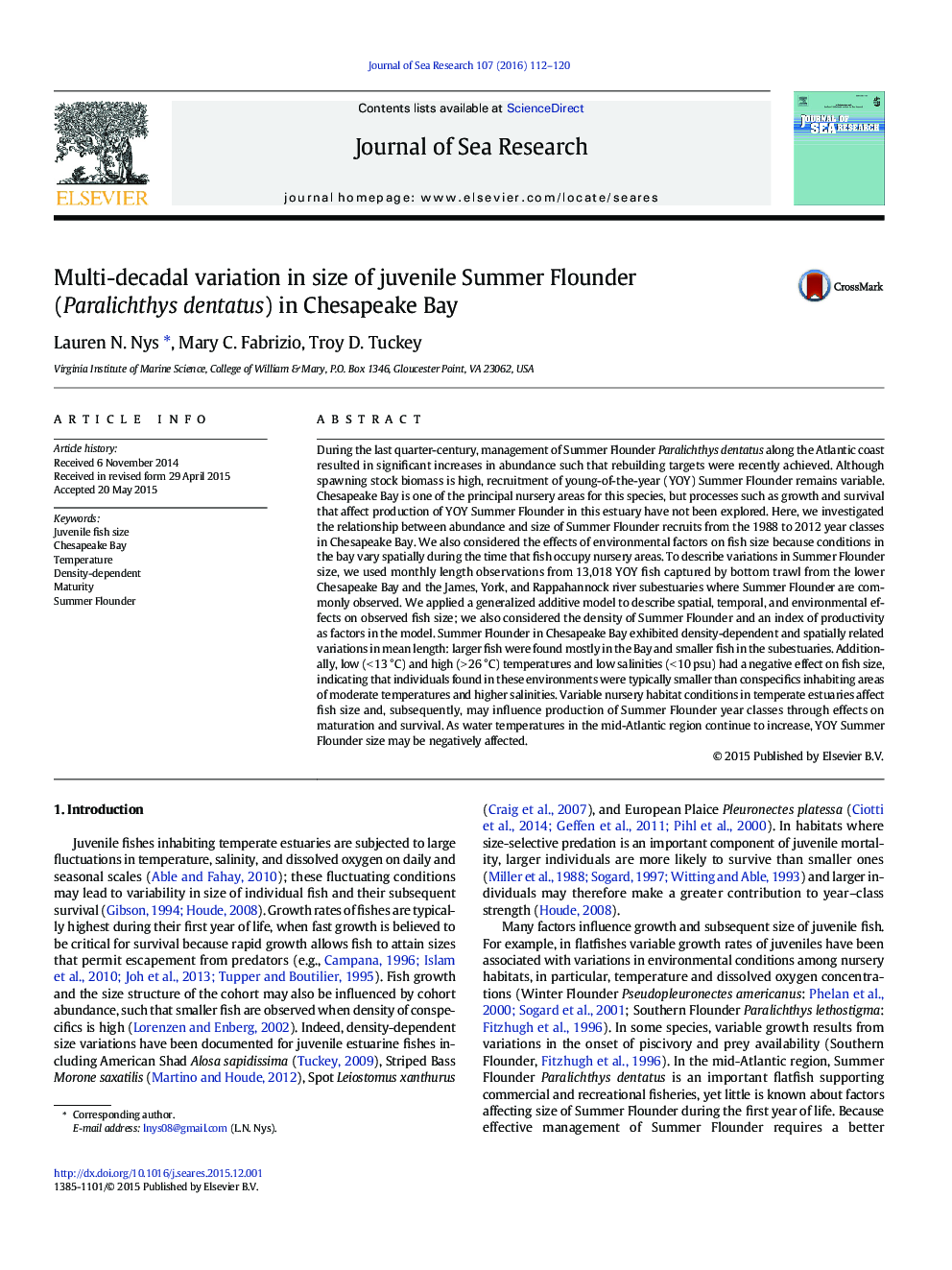| کد مقاله | کد نشریه | سال انتشار | مقاله انگلیسی | نسخه تمام متن |
|---|---|---|---|---|
| 4549642 | 1328088 | 2016 | 9 صفحه PDF | دانلود رایگان |

• Mean size of juvenile Summer Flounder varies among nursery habitats.
• Juvenile Summer Flounder exhibit density-dependent variations in size.
• Summer Flounder collected from habitats with low (< 13 °C) and high (> 26 °C) water temperatures are smaller.
• Continued warming of nursery areas may have negative effect on production of Summer Flounder.
During the last quarter-century, management of Summer Flounder Paralichthys dentatus along the Atlantic coast resulted in significant increases in abundance such that rebuilding targets were recently achieved. Although spawning stock biomass is high, recruitment of young-of-the-year (YOY) Summer Flounder remains variable. Chesapeake Bay is one of the principal nursery areas for this species, but processes such as growth and survival that affect production of YOY Summer Flounder in this estuary have not been explored. Here, we investigated the relationship between abundance and size of Summer Flounder recruits from the 1988 to 2012 year classes in Chesapeake Bay. We also considered the effects of environmental factors on fish size because conditions in the bay vary spatially during the time that fish occupy nursery areas. To describe variations in Summer Flounder size, we used monthly length observations from 13,018 YOY fish captured by bottom trawl from the lower Chesapeake Bay and the James, York, and Rappahannock river subestuaries where Summer Flounder are commonly observed. We applied a generalized additive model to describe spatial, temporal, and environmental effects on observed fish size; we also considered the density of Summer Flounder and an index of productivity as factors in the model. Summer Flounder in Chesapeake Bay exhibited density-dependent and spatially related variations in mean length: larger fish were found mostly in the Bay and smaller fish in the subestuaries. Additionally, low (< 13 °C) and high (> 26 °C) temperatures and low salinities (< 10 psu) had a negative effect on fish size, indicating that individuals found in these environments were typically smaller than conspecifics inhabiting areas of moderate temperatures and higher salinities. Variable nursery habitat conditions in temperate estuaries affect fish size and, subsequently, may influence production of Summer Flounder year classes through effects on maturation and survival. As water temperatures in the mid-Atlantic region continue to increase, YOY Summer Flounder size may be negatively affected.
Figure optionsDownload as PowerPoint slide
Journal: Journal of Sea Research - Volume 107, Part 1, January 2016, Pages 112–120